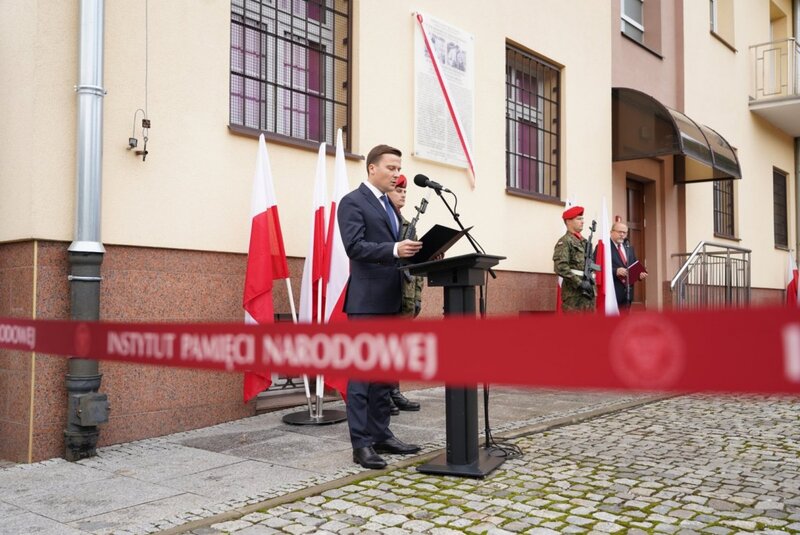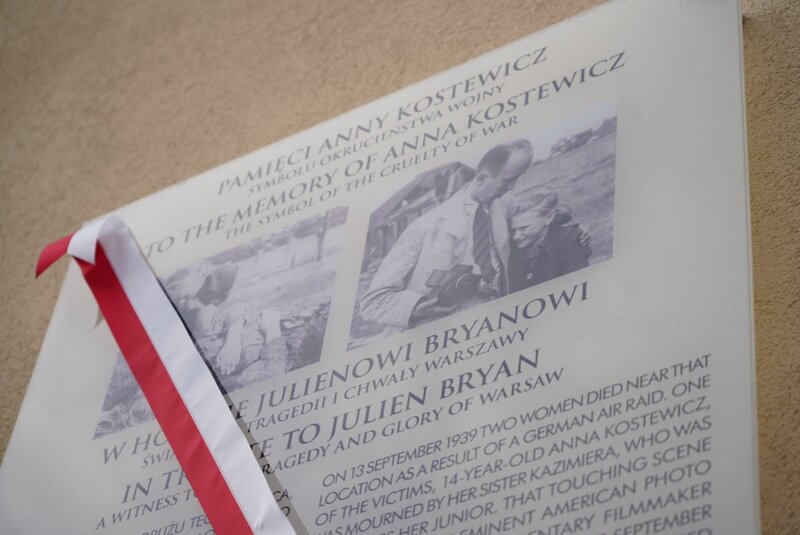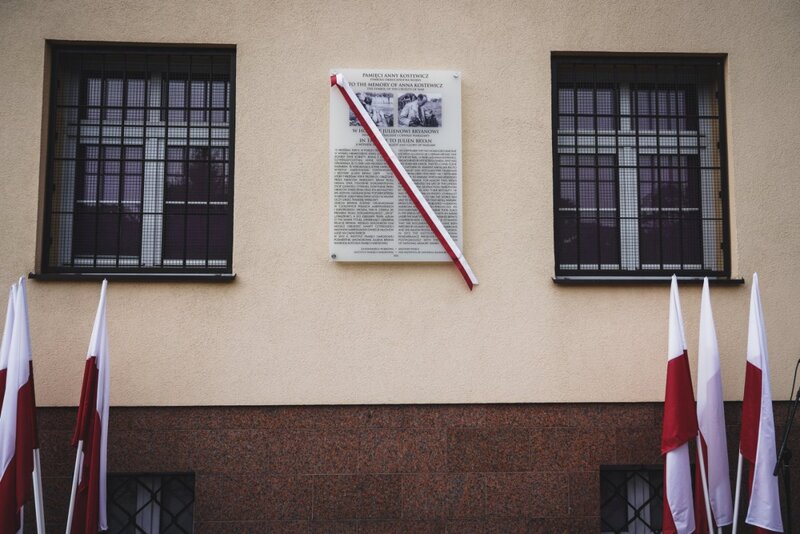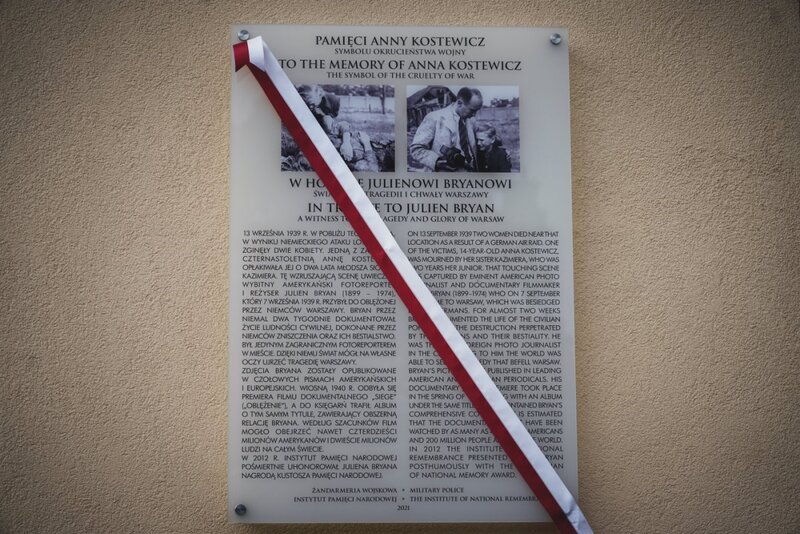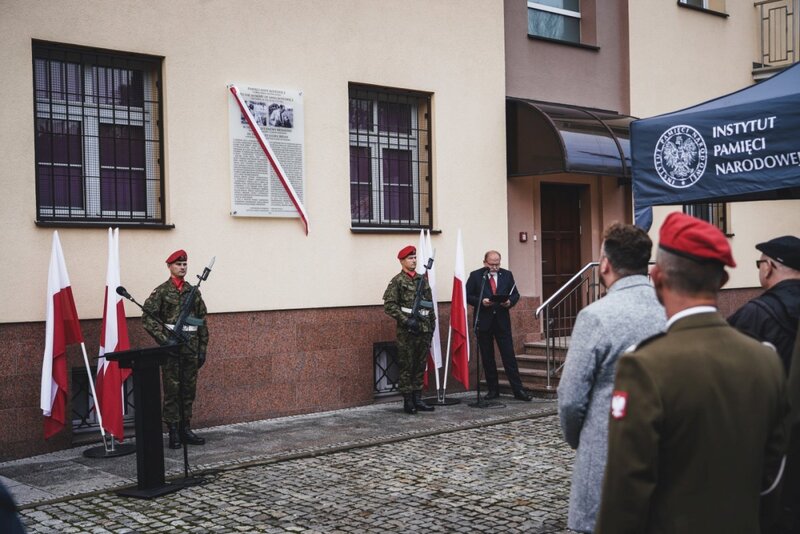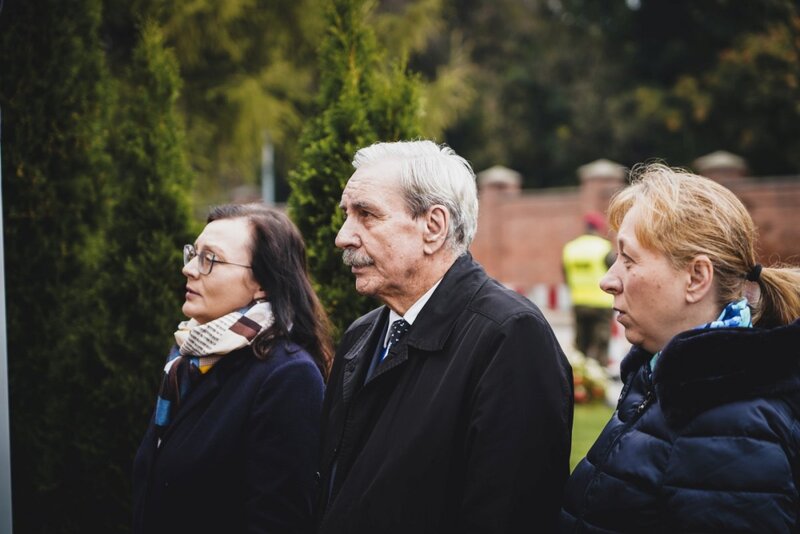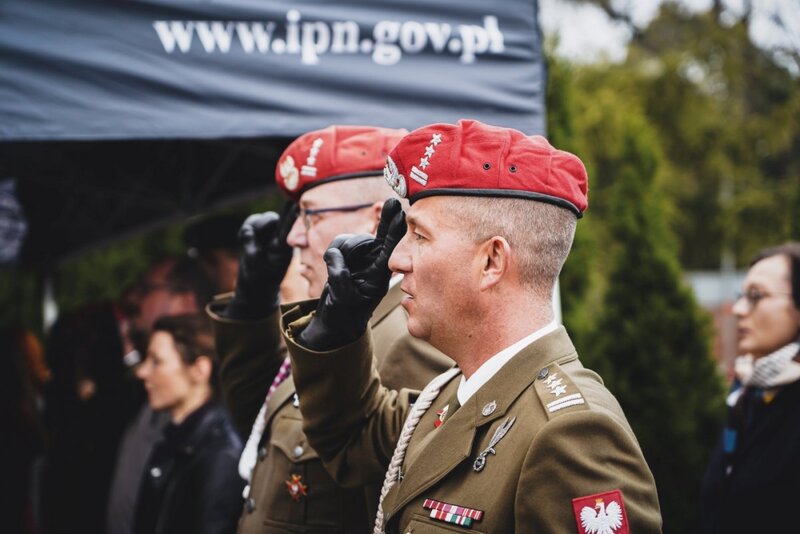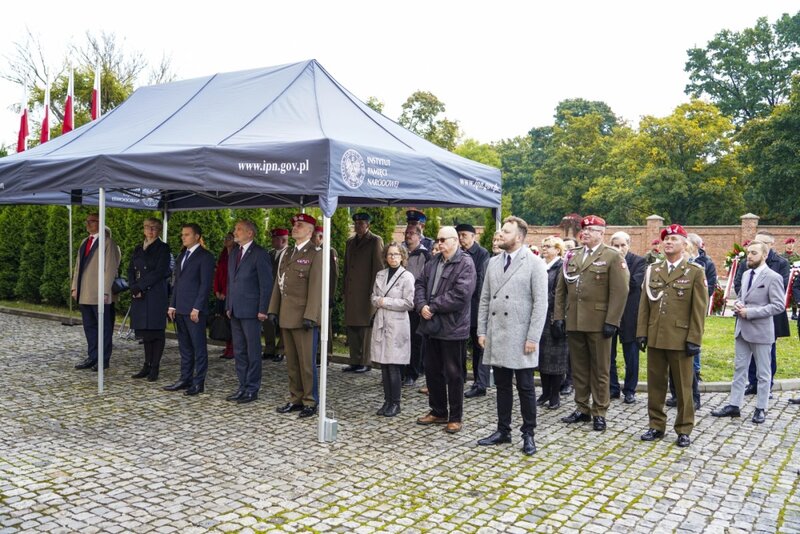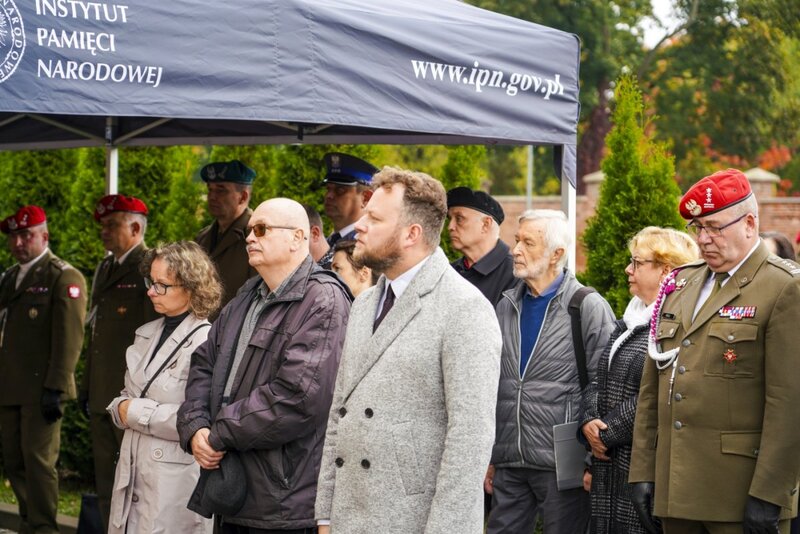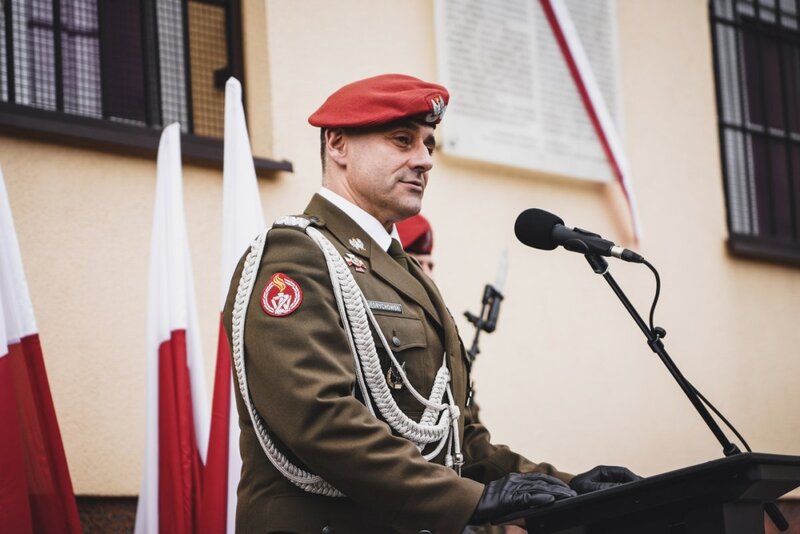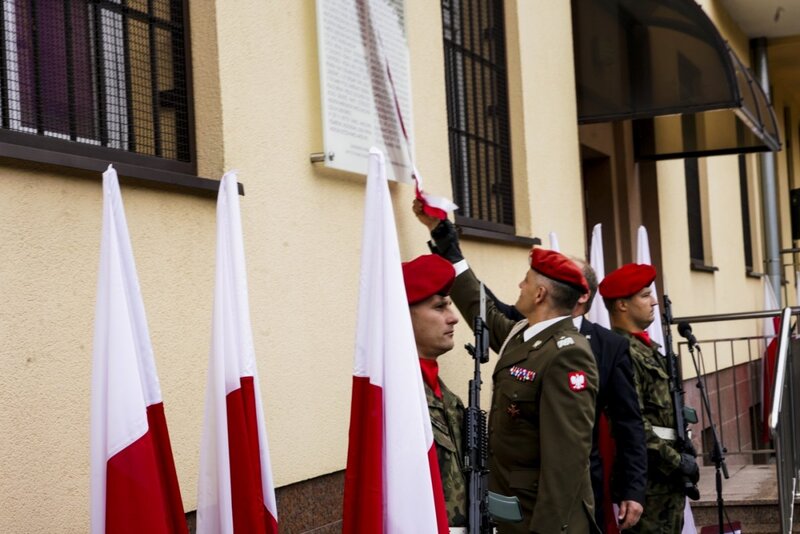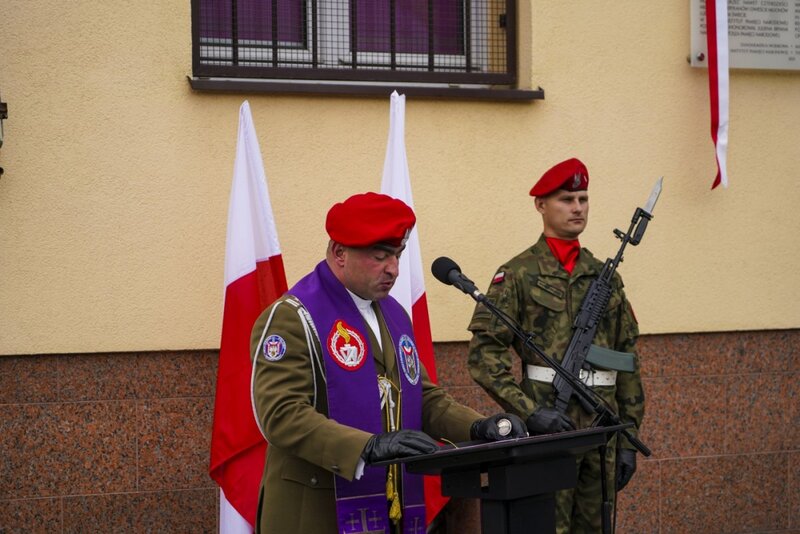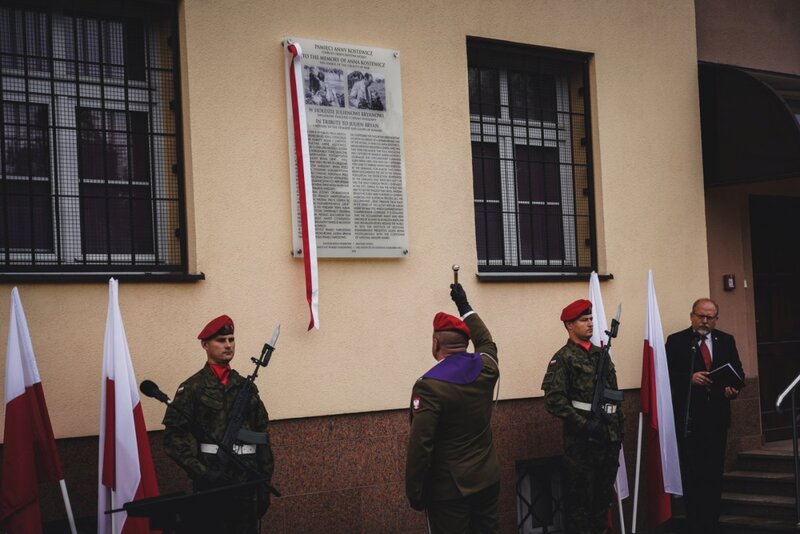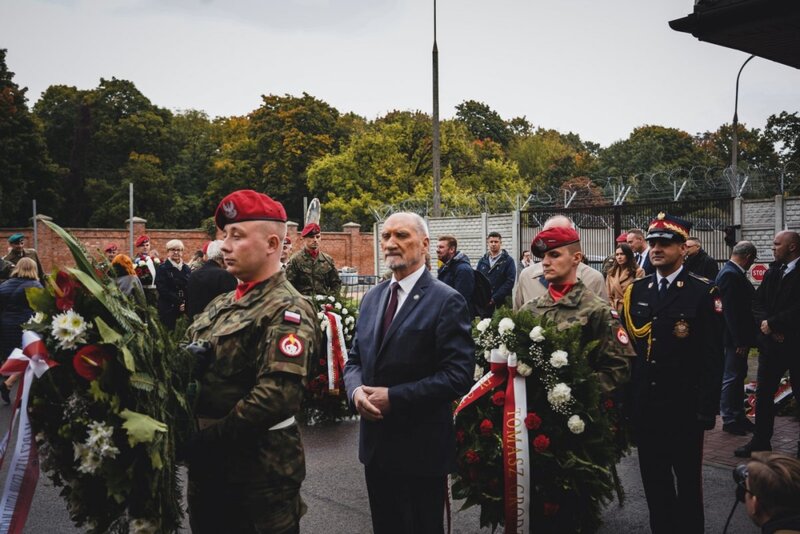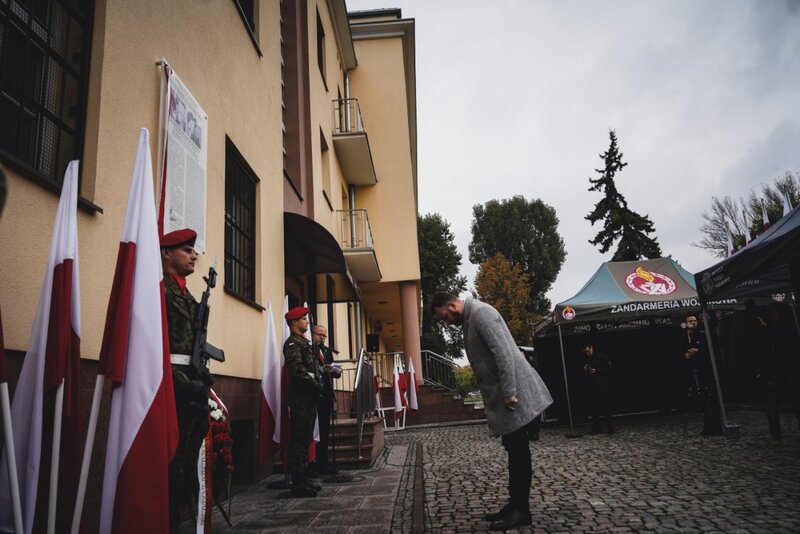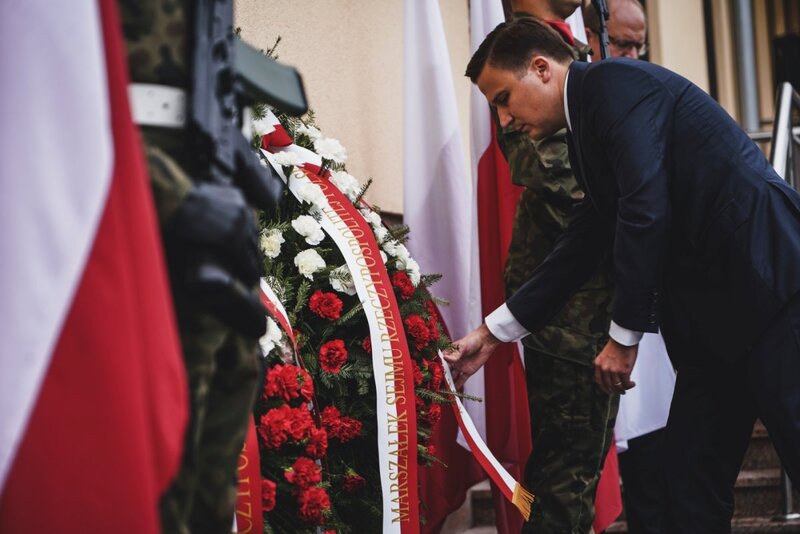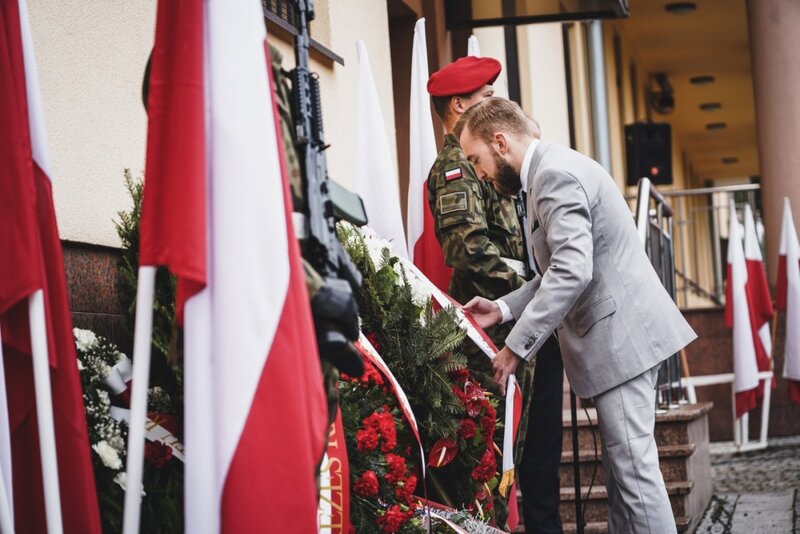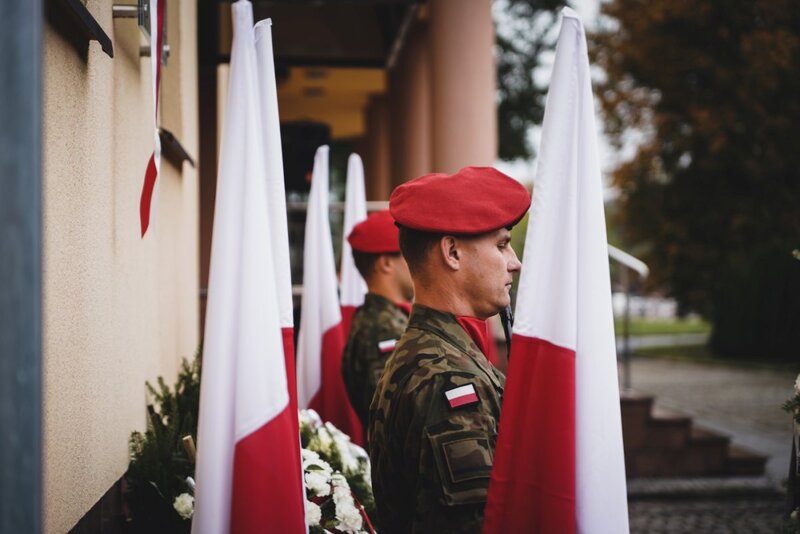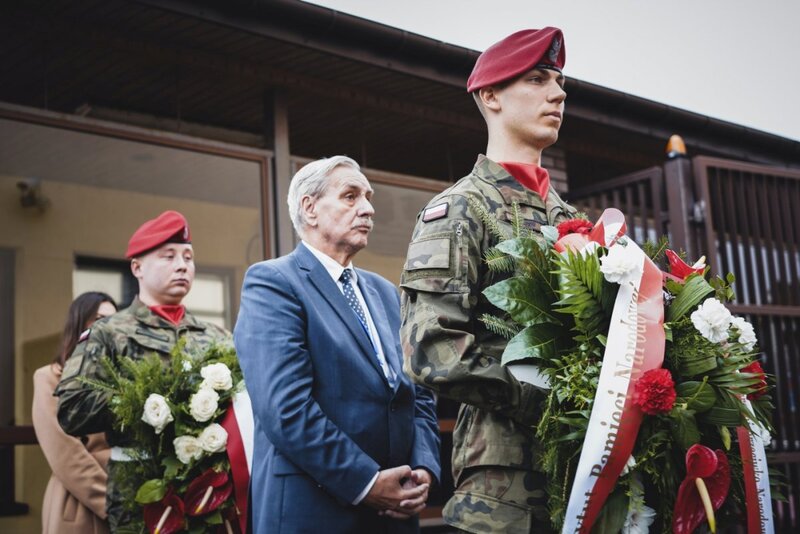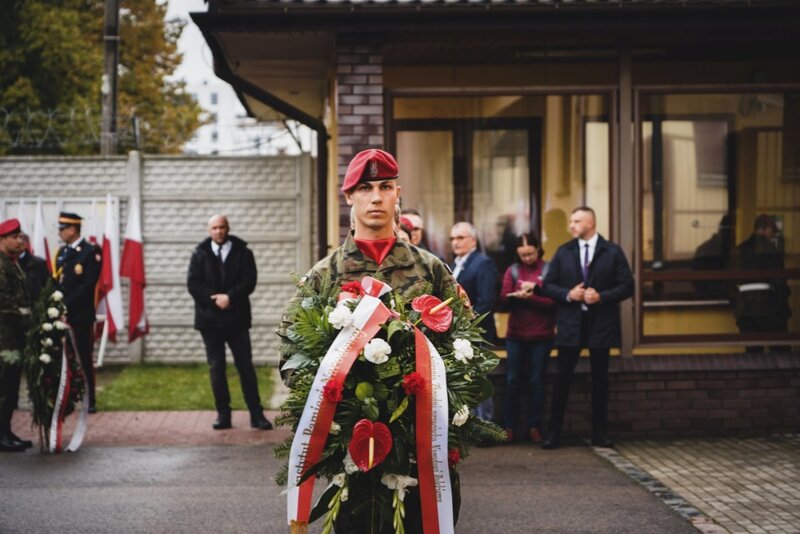At the inauguration of the ceremony, the Director of the IPN's Office for Commemorating the Struggle and Martyrdom, Adam Siwek, addressed the guests with the following words:
"Two years ago, the Institute of National Remembrance published an audiobook with the diaries of Col. Wacław Lipiński portraying the defense of Warsaw in September 1939. This shocking account allows us to travel back in time and visualize Warsaw suffering from the blows of German bombs and missiles.
We have gathered here today to honor the memory of a very special man thanks to whom we are not only limited by our imagination. Today, we are unveiling a plaque dedicated to Julien Bryan - the man who immortalized the tragedy of the city and its inhabitants in photographs and films.
The plaque is located on the spot where Anna Kostewicz died. Julien Bryan’s photograph and the powerful message it conveys have turned Anna Kostewicz into one of the symbols of the suffering of all civilian victims of the siege of Warsaw. "
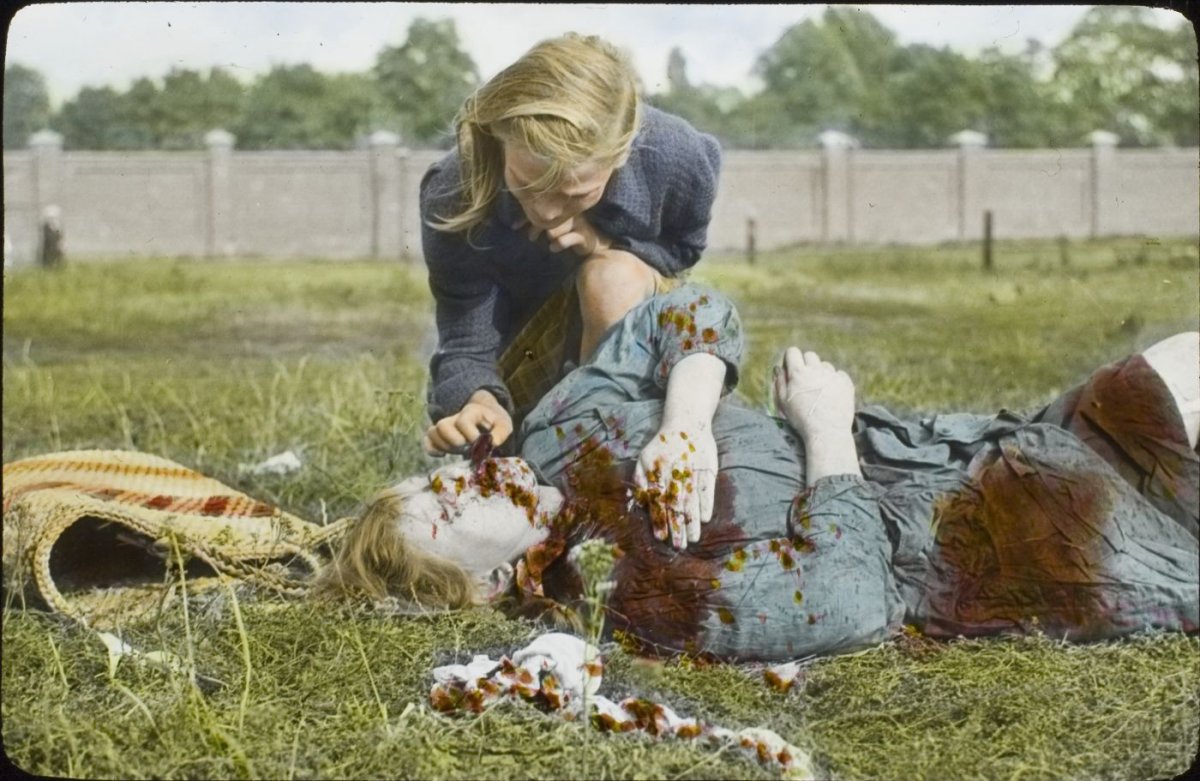
One of the most famous and symbolic photos taken in September 1939 by Bryan was a photo portraying 12-year-old Kazimiera Kostewicz mourning her two years older sister Anna, who died as a result of a German air attack. The plaque was funded by the IPN's Branch Office for Commemorating the Struggle and Martyrdom in Warsaw. In 2012, the Institute of National Remembrance posthumously honored Julien Bryan with the IPN's Custodian of National Memory prize.
In a letter addressed to the participants of the ceremony, the Speaker of the Polish Seym, Elżbieta Witek thanked the Institute of National Remembrance for cultivating the memory of the atrocities of World War II.
“On this official day of unveiling the plaque commemorating Julien Bryan and Anna Kostewicz, I would like to convey my words of appreciation to the Institute of National Remembrance for disseminating knowledge about the tragedy of civilians who died at the hands of the Nazis. I would also like to thank you for honoring the American photojournalist in such a beautiful way, as well as for popularizing his artistic and documentary work. I bow my head low to the victims of World War II .”
The gathered guests paid tribute to those murdered during World War II. The Director of the Warsaw Branch of the IPN, Prof. Jerzy Eisler laid a wreath on behalf of the President of the Institute Karol Nawrocki, Ph.D.
Julien Bryan (1899–1974), an American documentary filmmaker and photographer was accredited as the only foreign correspondent in Warsaw at that time. He arrived in the capital on 7 September 1939 just as all foreigners, diplomats and government officials were fleeing from Warsaw. He entered Poland through the border with Romania and soon witnessed the first bombings. He reached Warsaw after a few days of traveling by train. He was convinced that the war would be slow and that it would take many days for the German army to reach the Vistula. Surprised by the city blockade, he was forced to stay in the bombed Polish capital for two weeks. During this period, he decided to continue his job as a press photographer, often putting his own life at risk. Day after day, his admiration for the courage of the Polish population, mercilessly bombarded by German air force, increased. He contacted the Mayor of Warsaw, Stefan Starzyński, who provided him with a car, a guide and an interpreter so that he would be able to travel across Warsaw and document German methods of total war and the bombing of the city by the Luftwaffe. In the two weeks between 7-21 September, he managed to take hundreds of photographs documenting the siege of Warsaw and to shoot a few hours of film material of bombings, collapsing houses and hospitals, human bodies lying in the streets, the building of barricades, the tragedy of civilians, the German strength and arrogance. Stefan Starzyński granted him special permission to photograph everything that was happening in the capital under attack.Thanks to this, he was able to move freely around the city. He took photos of the city centre, the Wola district, and above all the poor neighbourhoods of Praga.
Bryan’s photos from this period became legendary, and with the help of the American press they were seen all over the world. On 21 September 1939, he left Warsaw, taking with him rich material documenting the lives of civilians and the brutality of German soldiers. The film tapes were then used to produce the film "Siege", depicting the heroic struggle of Warsaw’s inhabitants. The film was screened in American cinemas in the spring of 1940. It received the American Film Academy Oscar nomination in 1941 in the ‘best short documentary’ film category. Interestingly, during his stay in Warsaw, Bryan used, among others, Kodak's color films, which he took with him to test this innovative solution. The pictures taken by Julien Bryan are the only color photographs that show the siege of Warsaw in September 1939 from the point of view of a benevolent observer, showing the despair of Varsovians, the rubble, the wounded and the homeless. Other well-known color photographs depicting these events were taken by the German propaganda units. They, however, show a completely different story - instead of rubble and despair, they portray German dominance and military strength.
After the war, Bryan returned to Poland several times: in 1946, 1958, 1959 and 1974. He managed to find many of the people he photographed in 1939. The story of this search was included in the book "Warsaw. 1939 Siege. 1959 Warsaw Revisited ”. He died in New York on 20 October 1974, shortly after returning from Poland.
Thanks to an agreement concluded in 2010 with the son of the photographer Sam Bryan, the Archive of the Institute of National Remembrance is in possession of digital copies of Julien Bryan's photos.
More:
